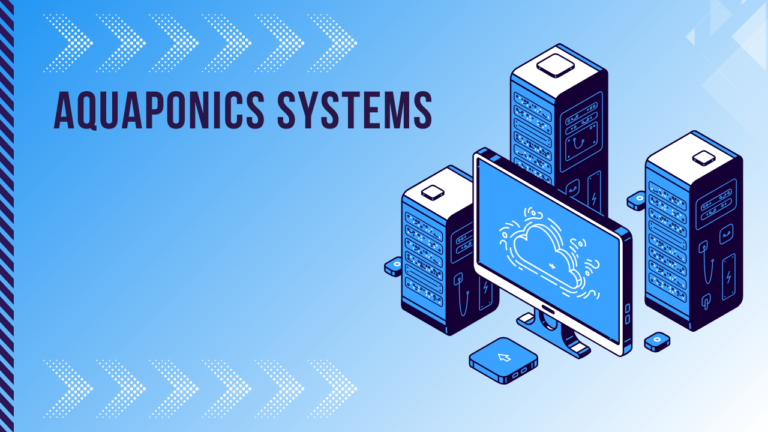Smart Irrigation Systems for Small Urban Gardens: A Comprehensive Guide
Efficient water management is crucial for successful urban gardening, especially in small spaces where resources are limited. Smart irrigation systems for small urban gardens offer an innovative solution to ensure your plants receive the right amount of water at the right time. This guide will explore the benefits, types, setup, and maintenance of smart irrigation systems, providing you with everything you need to create a sustainable and efficient watering system for your urban garden.
Why Choose Smart Irrigation Systems?
Smart irrigation systems are designed to optimize water usage, making them ideal for small urban gardens. Here are some key benefits:
- Water Efficiency: Reduces water waste by delivering precise amounts of water.
- Convenience: Automates watering schedules, saving time and effort.
- Healthier Plants: Ensures consistent and adequate watering, promoting healthier plant growth.
- Cost Savings: Lowers water bills by using water more efficiently.
- Environmental Benefits: Contributes to water conservation efforts.
Understanding Smart Irrigation Systems
What is a Smart Irrigation System?
A smart irrigation system uses advanced technology to control and monitor the watering of plants. These systems typically include sensors, controllers, and automated valves that adjust watering schedules based on real-time data.
Key Components of a Smart Irrigation System
For effective smart irrigation systems for small urban gardens, you need to understand the key components:
- Smart Controller: The brain of the system that manages watering schedules based on sensor data and weather forecasts.
- Soil Moisture Sensors: Measure the moisture level in the soil to determine when watering is needed.
- Weather Sensors: Collect data on temperature, humidity, and rainfall to adjust watering schedules.
- Automated Valves: Control the flow of water to different parts of the garden.
- Irrigation Lines: Deliver water to the plants through drip lines, soaker hoses, or sprinkler heads.
- Mobile App: Allows remote control and monitoring of the system through a smartphone or tablet.
Types of Smart Irrigation Systems
Several types of smart irrigation systems are suitable for small urban gardens:
1. Drip Irrigation Systems
Drip irrigation systems deliver water directly to the base of each plant through a network of tubes and emitters.
- Setup: Place drip lines around the plants, with emitters positioned at the root zone.
- Advantages: Highly efficient, reduces water evaporation, minimizes weed growth.
2. Soaker Hose Systems
Soaker hoses are porous hoses that release water slowly along their length.
- Setup: Lay soaker hoses on the soil surface or bury them slightly beneath the mulch.
- Advantages: Even water distribution, easy to install, reduces water runoff.
3. Sprinkler Systems
Sprinkler systems spray water over a designated area, mimicking natural rainfall.
- Setup: Position sprinkler heads to cover the entire garden area evenly.
- Advantages: Suitable for lawns and larger garden beds, easy to customize.
Setting Up a Smart Irrigation System
Choosing the Right System
Select a smart irrigation system that fits the size and layout of your garden. Consider the following factors:
- Garden Size: Ensure the system can cover the entire garden area.
- Plant Types: Choose a system that suits the water needs of your plants.
- Budget: Look for a system that offers the best value for your investment.
Gathering Supplies
Collect all necessary supplies for setting up your smart irrigation system, including:
- Smart controller
- Soil moisture and weather sensors
- Automated valves
- Irrigation lines (drip lines, soaker hoses, or sprinklers)
- Connectors and fittings
- Mobile app (if applicable)
Installing the System
Follow these steps to set up your smart irrigation system for small urban gardens:
- Install the Smart Controller: Mount the controller in a weather-protected location and connect it to a power source.
- Place the Sensors: Position soil moisture sensors in representative areas of your garden and install weather sensors in an open space.
- Set Up the Irrigation Lines: Lay out the drip lines, soaker hoses, or sprinklers according to your garden layout.
- Connect the Valves: Attach automated valves to the irrigation lines and connect them to the smart controller.
- Configure the Controller: Use the mobile app or controller interface to set watering schedules based on sensor data and weather forecasts.
Maintaining Your Smart Irrigation System
Regular Inspections
Perform regular inspections to ensure your system is functioning correctly:
- Check Sensors: Ensure soil moisture and weather sensors are clean and working properly.
- Inspect Irrigation Lines: Look for leaks, clogs, or damage in the drip lines, soaker hoses, or sprinklers.
- Test Valves: Verify that automated valves open and close as scheduled.
Seasonal Adjustments
Adjust your watering schedules based on seasonal changes:
- Spring and Summer: Increase watering frequency during hot and dry periods.
- Fall and Winter: Reduce watering during cooler and wetter months.
System Upgrades
Consider upgrading your system as needed:
- Add More Sensors: Enhance accuracy by adding more soil moisture and weather sensors.
- Expand Coverage: Extend irrigation lines to cover new garden areas or additional plants.
- Upgrade Controller: Invest in a more advanced smart controller with additional features.
Common Challenges and Solutions
Uneven Water Distribution
If some areas of your garden receive more water than others, adjust the placement of irrigation lines and emitters.
- Solution: Reposition drip lines or sprinklers for even coverage, and check for clogs or blockages.
Sensor Malfunctions
Faulty sensors can lead to inaccurate watering schedules.
- Solution: Clean or replace sensors regularly, and recalibrate them if necessary.
Connectivity Issues
If your smart controller loses connection with the mobile app, check your Wi-Fi signal and controller settings.
- Solution: Move the controller closer to your Wi-Fi router or use a signal booster.
Final Thoughts on Smart Irrigation Systems for Small Urban Gardens
Implementing smart irrigation systems for small urban gardens is a sustainable and efficient way to manage water usage while ensuring your plants receive the care they need. With the right setup and maintenance, these systems can save you time, reduce water waste, and promote healthier plant growth. Whether you choose a drip irrigation system, soaker hose system, or sprinkler system, smart irrigation technology will transform your urban gardening experience.
FAQs
1. Can I install a smart irrigation system myself?
Yes, most smart irrigation systems are designed for easy DIY installation. Follow the manufacturer’s instructions and seek online tutorials if needed.
2. How much water can I save with a smart irrigation system?
Smart irrigation systems can save up to 50% more water compared to traditional systems by optimizing watering schedules and reducing waste.
3. Do I need a Wi-Fi connection for a smart irrigation system?
Many smart irrigation systems require a Wi-Fi connection for remote control and monitoring via a mobile app. However, some systems also offer offline functionality.
4. Can I use a smart irrigation system for container plants?
Yes, smart irrigation systems can be adapted for container gardening by using drip lines or soaker hoses specifically designed for pots and planters.
5. How often should I replace the sensors in my smart irrigation system?
Sensor lifespan varies by brand and model, but it’s generally recommended to replace soil moisture and weather sensors every 2-3 years for optimal performance.
By incorporating smart irrigation systems for small urban gardens into your gardening routine, you can achieve a more sustainable and efficient approach to watering, ensuring your urban garden thrives with minimal effort. Happy gardening!




